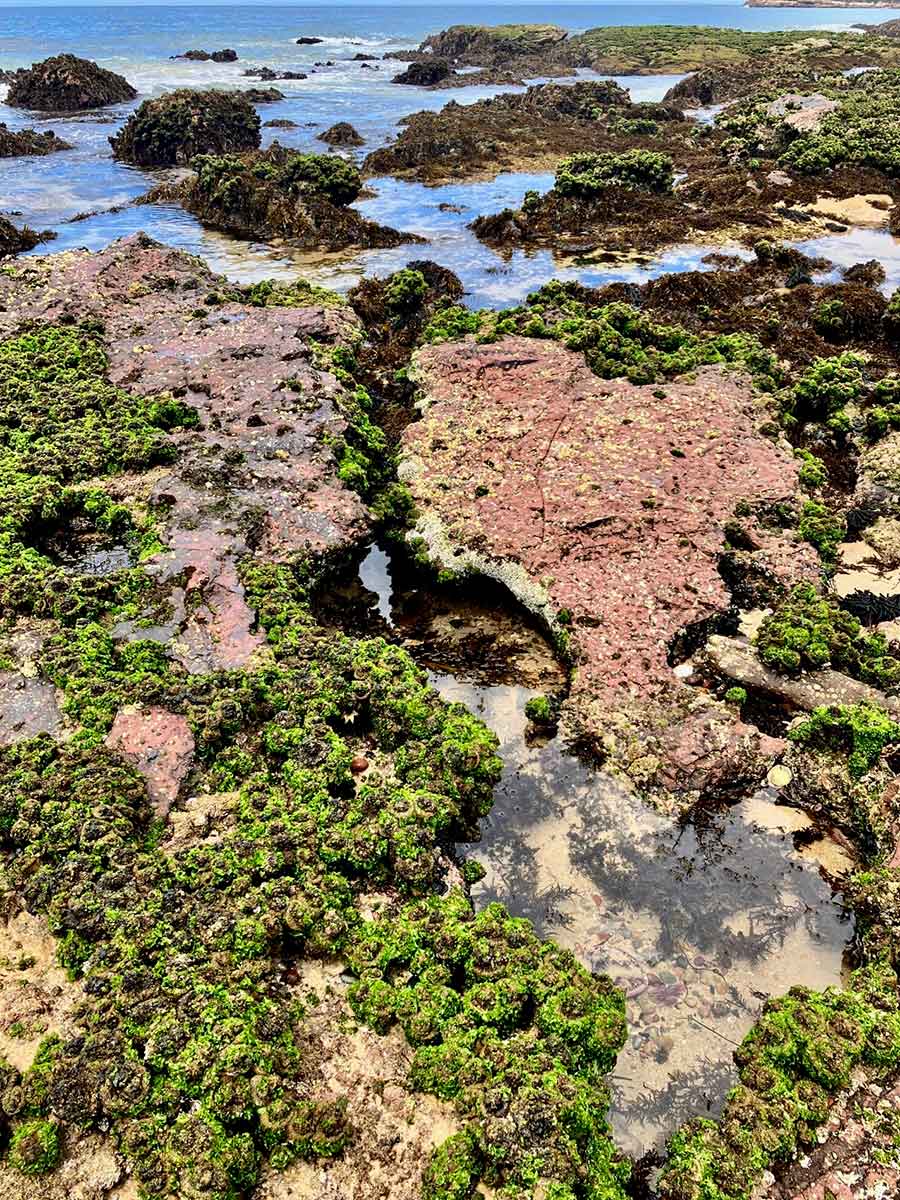On a marine rock platform, at the lowest of tides a whole other landscape is revealed, a rich and colourful world teeming with life.
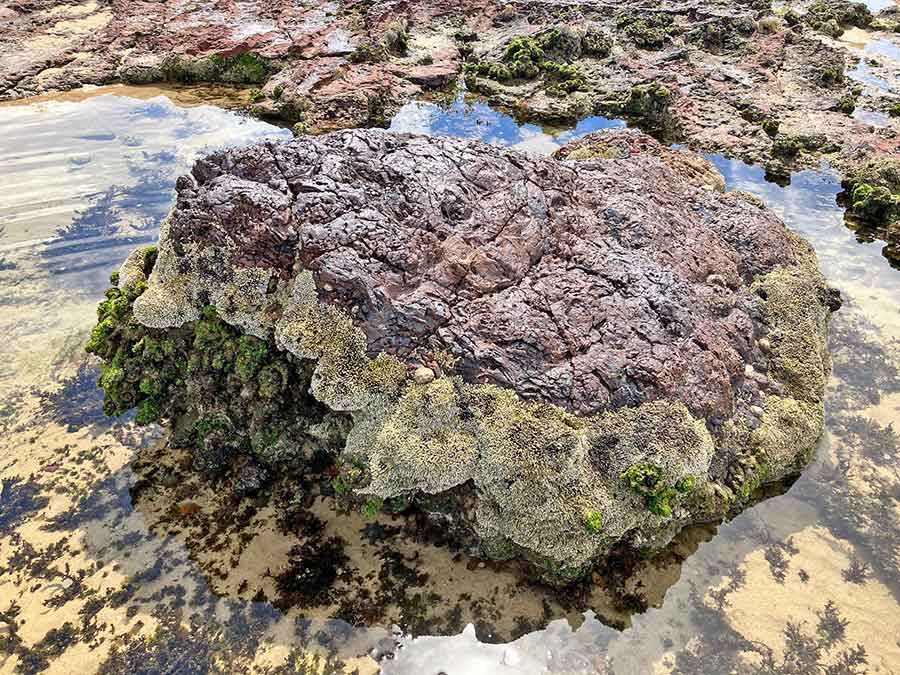
While we usually only see the top sunbaked surface of rocks, here the next layer down is on show – the dense cities of Galeolaria, tube-building worms needing seawater, but safe enough within their hard walls to withstand some exposure.
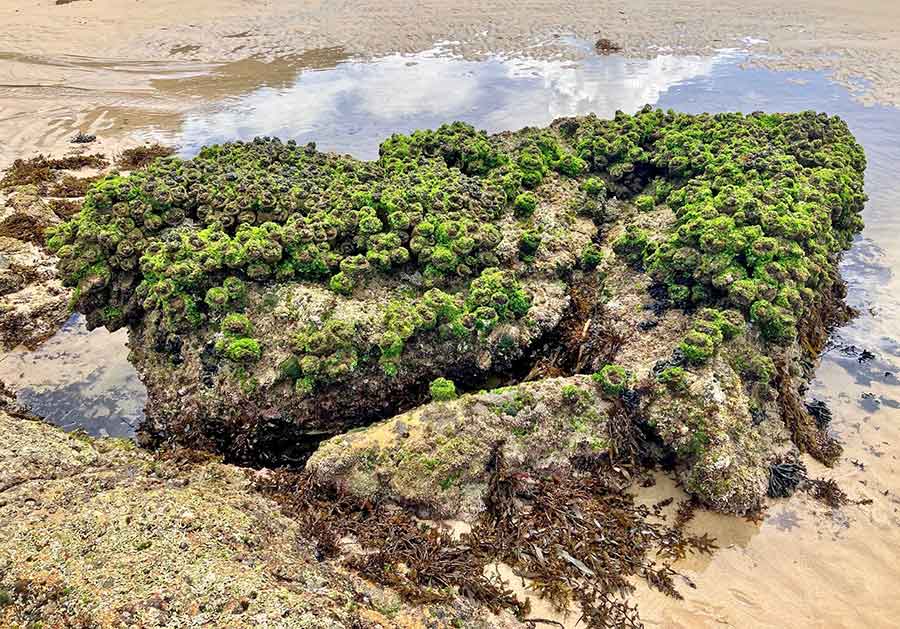
The bright green forests of Cunjevoi prefer to be underwater, and sometimes you see them ejecting jets of water upwards in the changing tide. Their common name is Sea Squirts; their soft insides were food for Indigenous folk, and then often used as bait by fishermen, but are now mostly protected.
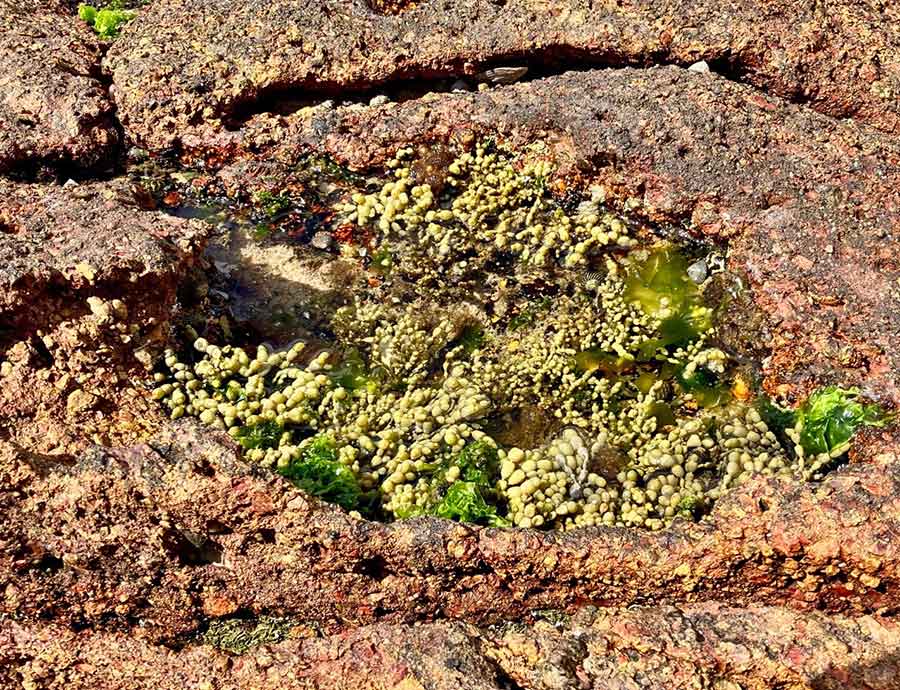
Some of the sea gardens are tiny, packed into water-holding hollows in a rock, but so full of plants; here I can see ones that we used to call Sea Lettuce and Neptune’s necklace. A jewel box of life.
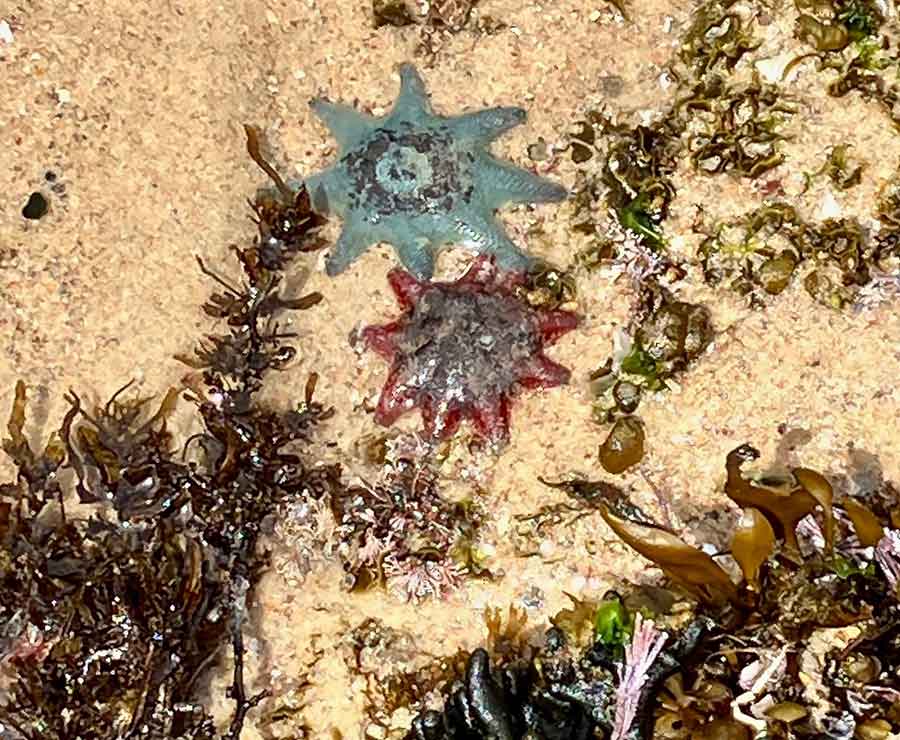
The plentiful small starfish here are mostly in shades of red and blue, but this particular aqua is not common.

Nor is this orange one that caught my eye; and here I can see at least four more starfish, but they are so well camouflaged or half-buried in sand that there may be more.

Across the shell-encrusted expanse of rock platform, I think I see a bird poking about. Is this my signature solitary bird for today?
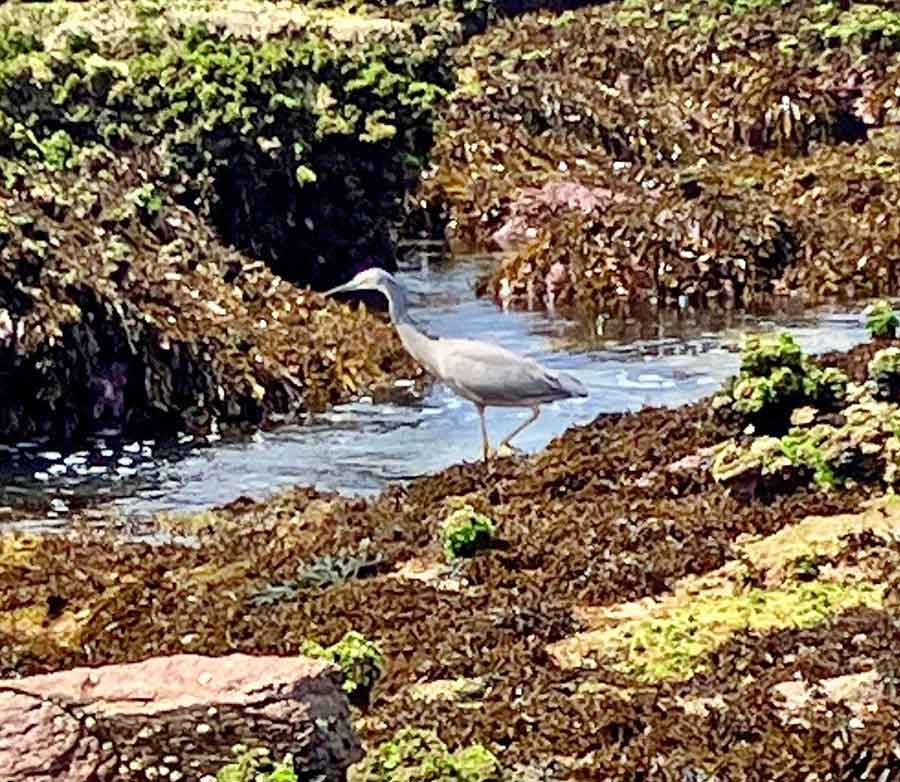
Yes! Edging closer, I think it is a White-faced Heron, on its long elegant legs, looking for titbits in the temporarily exposed world as the sea washes in and out.
Much as I am, I guess, but visual, not edible.
